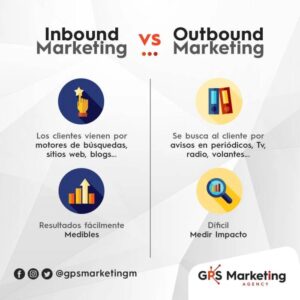
Understanding your target market is crucial for the success of any business. It enables you to tailor your products and services to meet the specific needs and preferences of your audience. By diving into target market analysis, you can uncover insights that guide your marketing efforts and foster stronger connections with potential customers.
This process involves segmenting the market through various criteria, such as demographics and psychographics, and considering consumer behavior to inform your strategies. As you explore different methodologies for conducting market research, you’ll find that the right tools can significantly enhance your effectiveness in identifying and reaching your desired audience.
Understanding Target Market
Identifying the correct audience for products or services is crucial for any business aiming to succeed in today’s competitive marketplace. A well-defined target market enables businesses to tailor their marketing strategies effectively, ensuring that they reach the right consumers with the right message at the right time. This not only enhances customer engagement but also leads to higher sales conversions and customer loyalty.Segmenting a market based on demographics and psychographics allows businesses to create a more detailed understanding of their potential customers.
Demographic segmentation involves categorizing consumers based on identifiable statistics such as age, gender, income, education level, and occupation. This method is foundational because it provides a clear picture of who the customers are.
Methods for Segmenting a Market
To segment a market effectively, businesses should consider various methods that combine both demographic and psychographic elements. These methods allow for a more comprehensive understanding of consumer preferences and behaviors. Here are some key techniques:
- Demographic Segmentation: This involves dividing the market into groups based on factors such as age, gender, income, and education. For instance, a luxury car brand may target affluent individuals aged 30-55, primarily professionals with higher disposable incomes.
- Psychographic Segmentation: Beyond demographics, psychographics delve into the lifestyle, values, interests, and attitudes of consumers. For example, a brand promoting sustainable products might focus on eco-conscious consumers who prioritize environmental conservation.
- Behavioral Segmentation: This method categorizes consumers based on their purchasing behavior, usage rates, and brand loyalty. For example, a coffee shop could target daily commuters as frequent customers while offering promotions to occasional visitors.
- Geographic Segmentation: Understanding where customers live can influence product offerings and marketing approaches. Localized marketing strategies can be more effective in catering to regional preferences and cultures.
Consumer behavior plays a significant role in shaping marketing strategies, as it provides insights into how individuals make purchasing decisions. By analyzing consumer behavior, businesses can identify trends and preferences that inform product development, pricing, and promotional strategies. Several factors influence consumer behavior, such as cultural influences, personal experiences, and social connections.
Understanding consumer behavior enables companies to predict how changes in marketing strategies might impact their target audience, ultimately leading to better alignment with consumer needs and desires.
For example, during the COVID-19 pandemic, many companies shifted their marketing strategies to emphasize online shopping experiences, recognizing that consumer preferences were changing rapidly. This shift not only helped maintain customer engagement but also led to increased online sales for many retailers. In summary, understanding the target market through effective segmentation and consumer behavior analysis is essential for developing successful marketing strategies.
By tailoring approaches to meet the specific needs and preferences of their audience, businesses can drive engagement and achieve sustainable growth.
Utilizing Market Research

Market research is an essential tool for businesses aiming to understand their target audience and enhance decision-making processes. By implementing well-structured market research methodologies, companies can gather valuable insights about consumer behavior and preferences, allowing them to tailor their offerings effectively.Various market research methodologies offer different advantages in understanding customer dynamics. Quantitative methods, such as surveys, provide numerical data that can be statistically analyzed to identify trends and patterns.
Qualitative methods, including focus groups and interviews, facilitate deeper insights into consumer motivations and attitudes. Each method plays a crucial role in creating a comprehensive market research framework.
Market Research Methodologies
The effectiveness of market research methodologies hinges on their ability to uncover meaningful insights. Here are some common approaches:
- Surveys: These are structured questionnaires designed to gather quantitative data from a large audience. Surveys can be conducted online, via phone, or in-person, and are valuable for assessing customer satisfaction or preferences.
- Focus Groups: This qualitative method involves guided discussions with a small group of participants. It allows for in-depth exploration of opinions and attitudes towards products or brands.
- Interviews: One-on-one interviews delve into individual perspectives. They provide a more personalized understanding of customer experiences and expectations.
- Observational Research: This method involves observing consumers in their natural environment to gain insights into their behavior and interactions with products.
The choice of methodology depends on the research objectives and the type of data required. For example, if a company aims to evaluate customer satisfaction levels across a broad demographic, surveys would be the most effective approach. Conversely, a brand looking to understand the emotional connection consumers have with its products would benefit from focus groups.
Conducting Surveys and Focus Groups
Gathering customer insights through surveys and focus groups involves systematic steps to ensure effectiveness. Here’s how to conduct these methods effectively:
1. Define Objectives
Clearly Artikel what information you seek from the survey or focus group. This clarity will guide the design of your questions.
2. Select Participants
For surveys, use stratified sampling to ensure diverse demographics. For focus groups, recruit participants who represent your typical customer profile.
3. Design Questions
Craft questions that are clear and unbiased. For surveys, include a mix of closed and open-ended questions. In focus groups, prepare prompts to encourage discussion.
4. Conduct the Session
For surveys, distribute your questionnaire via the preferred channels. For focus groups, facilitate the discussion to ensure all voices are heard while keeping the conversation on track.
5. Analyze Results
Use statistical tools for survey data analysis, and look for themes and patterns in focus group discussions to draw insights.The insights gained from these processes can inform marketing strategies, product development, and customer service improvements.
Analyzing Competitors and Market Trends
Understanding the competitive landscape and emerging market trends is vital for strategic positioning. An effective framework for analysis includes:
1. Competitor Identification
List key competitors within the market. This includes both direct competitors and those offering substitute products.
2. SWOT Analysis
Evaluate each competitor’s strengths, weaknesses, opportunities, and threats. This analysis helps identify areas where your business can gain an advantage.
3. Market Trend Analysis
Stay informed about industry trends by reviewing reports, market forecasts, and consumer behavior studies. Look into factors such as technological advancements, shifting consumer preferences, and economic indicators.
4. Benchmarking
Compare your performance against competitors in areas such as pricing, product features, and customer service. This comparison provides context to your business’s position within the industry.
5. Continuous Monitoring
Market conditions and competitor strategies evolve, making it essential to regularly update your analysis. Establish a routine for reviewing competitive insights and market trends to remain agile.By employing a robust framework for analyzing competitors and market trends, businesses can proactively adapt their strategies to meet market demands and gain a competitive edge.
Integrating Marketing Tools
To effectively identify and engage with your target market, leveraging appropriate marketing tools is essential. A variety of marketing software solutions exist to streamline this process, along with strategic public relations and telemarketing techniques that can enhance outreach efforts. By integrating these tools, businesses can ensure that they are accurately targeting the right audiences with the right messages.
Marketing Software Solutions
Various marketing software solutions assist businesses in pinpointing their target markets. These tools offer insights and analytics that can shape marketing strategies and campaigns. Here’s a list of notable software options that can aid in target market identification:
- HubSpot: An all-in-one inbound marketing platform that provides tools for customer relationship management, content management, and analytics to help identify and engage target audiences.
- Google Analytics: A web analytics service that tracks and reports website traffic, enabling businesses to understand user behavior and demographics.
- SEMrush: A comprehensive tool that offers insights into competitors’ strategies and research, helping businesses to identify their target market’s interests.
- SurveyMonkey: A platform for creating surveys that can gather valuable customer insights and feedback, aiding in understanding customer preferences.
- Mailchimp: An email marketing service that offers analytics and audience segmentation options, allowing businesses to tailor campaigns to specific demographics.
Public Relations Strategies
Public relations (PR) strategies play a vital role in reaching targeted audiences effectively. These strategies help businesses create a positive image and build relationships with key stakeholders. The benefits of employing PR strategies include enhanced credibility, increased visibility, and improved audience engagement. Effective PR can elevate brand awareness and foster trust, as consumers are more likely to engage with brands that have a solid reputation.Incorporating various PR tactics can yield significant results.
For instance, media outreach can secure coverage in relevant publications, while press releases can disseminate important news to target audiences. Engaging in community events or sponsorships can also strengthen brand presence and appeal to specific demographics.
“The goal of good public relations is to create a mutual understanding between the company and its target audiences.”
Telemarketing Techniques
Telemarketing remains a powerful method for engaging potential customers directly. By employing effective telemarketing techniques, businesses can create meaningful interactions that often lead to conversions. Personalization is key; using customer data to tailor conversations can significantly increase interest and responsiveness.Techniques that enhance telemarketing effectiveness include:
- Targeted Lists: Using data-driven insights to compile lists of potential customers who fit the ideal customer profile enhances the likelihood of successful outreach.
- Script Development: Crafting engaging scripts that allow flexibility for conversation can keep prospects engaged while ensuring that key points are covered.
- Follow-Up Strategies: Implementing a structured follow-up process helps maintain contact with leads, demonstrating continued interest and commitment.
- Training and Development: Regular training sessions for telemarketers can improve their communication skills and product knowledge, leading to more effective conversations.
Final Conclusion

In summary, target market analysis is a vital component of successful marketing strategies. By understanding who your customers are and what they want, you can position your offerings more effectively. Embracing the insights gained from thorough market research and utilizing various marketing tools will ultimately lead to better engagement and improved business outcomes.
Detailed FAQs
What is target market analysis?
Target market analysis is the process of identifying and understanding the specific group of consumers most likely to purchase your products or services.
Why is target market analysis important?
It helps businesses tailor their marketing strategies to effectively reach and engage their intended audience, ultimately improving sales and customer satisfaction.
What methods are used in market segmentation?
Methods include demographic segmentation (age, gender, income) and psychographic segmentation (lifestyle, values, interests).
How can I gather insights for target market analysis?
Conducting surveys, focus groups, and analyzing existing customer data are effective ways to gather insights about your target market.
What tools can assist in target market analysis?
Marketing software solutions, analytics platforms, and CRM systems can help you identify and understand your target market better.






